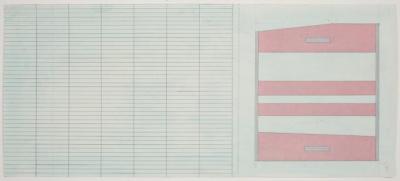D.E. May: PORTLAND2014 - Oregonian

Portland 2014 -- the third biennial exhibition of Portland artists hosted by Disjecta -- follows two spotty biennial exhibitions, which suffered from both safe selections of well-established locals and work from emerging artists which failed to rise above the provincial. But this year’s edition, which includes shows at Disjecta as well as at the Best Art Gallery in Portland, Upfor Contemporary Art and the White Box at University of Oregon-Portland, is exactly what one hopes for from this type of show. It wrangles a wide array of disciplines, from landscape painting to social practice; it allows the work of up-and-comers to rub elbows with the city’s veteran artists; and it observes concentrated interests among its participants without stooping to tidy summations of the region’s identity. In other words, it’s a bracing reappraisal of what’s happening here right now, and a tonic for the Portland Art Museum’s consistently underwhelming Contemporary Northwest Art Awards, which replaced the original Oregon Biennial after 2006.
The chief reason for Portland 2014’s success is its curator, Amanda Hunt, a curator-at-large for the Los Angeles nonprofit LAXART, who brings a fresh pair of eyes to the task. She’s also dispensed with any rigid legalism about which artists are fair game, expanding her scope beyond both the biennial’s limiting application process and the city’s limits, including Richard Thompson of Dayton, D.E. May of Salem and former Appendix programmers Zachary Davis, Alex Mackin Dolan and Travis Fitzgerald, who have since decamped to New York. Likewise, she’s included print-on-demand micro-publisher Publication Studio, which has partnered with many of the city’s young artists to produce books of their work since 2009. Even Portland 2014’s public outreach has been wonderfully re-imagined, as a trio of Clear Channel billboards in the close-in East Side have become canvases for works by Thompson, Ralph Pugay, and collaborators Modou Dieng and Devon A. VanHouten-Maldonado. While they ostensibly advertise the exhibition, the uninitiated wouldn’t know it: there is no text to spoil the delight of encountering these enormous works smuggled into the landscape.
Hunt’s grouping of artists among the four venues sketches out resonant connections. At White Box, the work of Davis, Dolan and Fitzgerald, who make art independently but previously programmed Appendix as a collective, is presented together, so that ideas echo and overlap with the natural exchange of close collaborators. Likewise, the exhibition at Disjecta teases out through-lines between painting, sculpture and textile art in contributions from Jessica Jackson Hutchins and Blair Saxon-Hill. Hutchins explores new territory in a wall-mounted work, which stretches swathes of gauzy fabric over an old window frame, muting a layer of collaged newspaper beneath. Her painterly composition conspicuously lacks paint, linking it to a pair of tapestry-like works by Saxon-Hill, which similarly sketch out abstracted landscapes with draping fabrics.
But Portland 2014’s real success is due to a variable that a curator can’t control: next-level leaps from many of the city’s promising young artists. Saxon-Hill’s textile “paintings” are, far and away, the strangest, most ambitious and visually arresting works she’s ever produced. Evan La Londe’s suite of photograms shows the artist evolving from formal experimentalist to image-maker. Davis continues to advance his practice of heady craft, best typified by a sculpture of conjoined spheres overlaid with a beautifully delicate filigree of spider webs. And Ellen Lesperance -- whose multimedia installation at Upfor combines intricate drawings, terra cotta figures, and dyed silks made by wrapping bouquets and then burying them in the earth for months at a time -- delivers a spectacular showcase of her abundant skills and fertile imagination.
Taken together, the work in Portland 2014 is the best encapsulation of the breadth and quality of art being made here right now that has appeared in any biennial exhibition, whether Disjecta or the Portland Art Museum, in the past decade. It shows something other recent iterations have missed: namely, a vibrant community of contemporary practitioners who are not beholden to the clutch of regional clichés that biennials of the not-so-distant past have perpetuated.
--John Motley
http://www.oregonlive.com/art/index.ssf/2014/03/review_portland_2014_the...